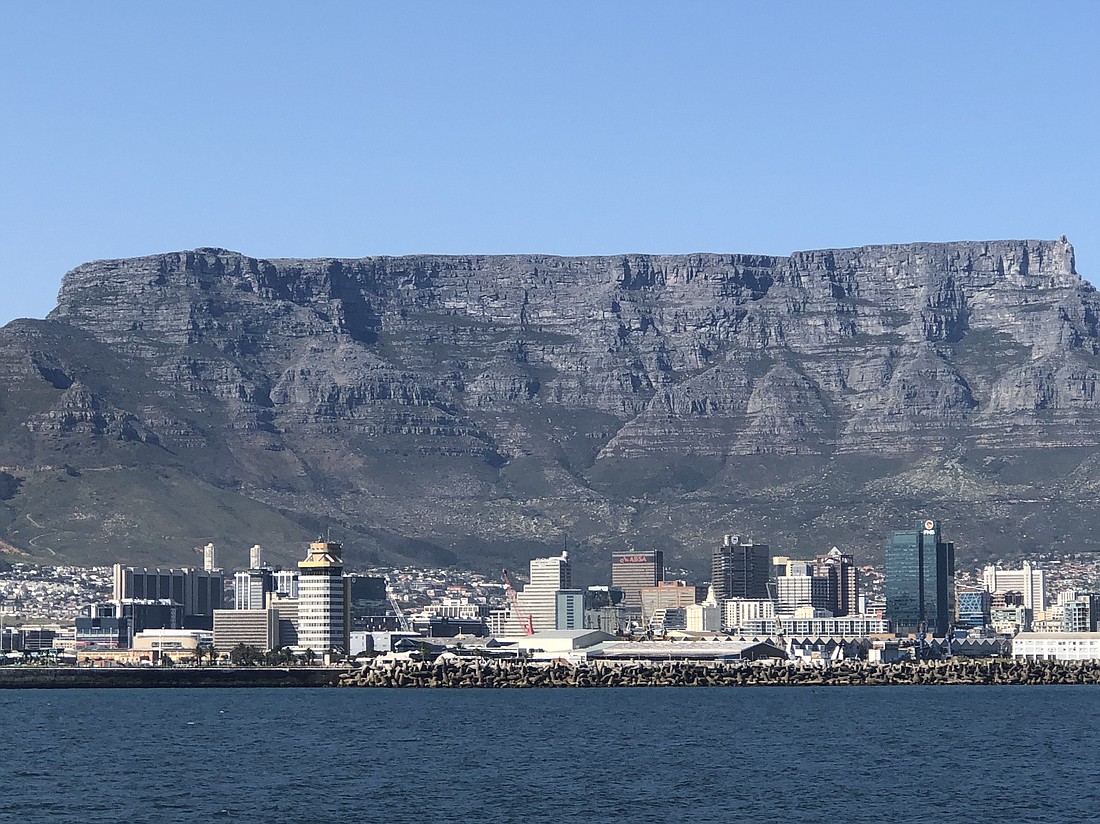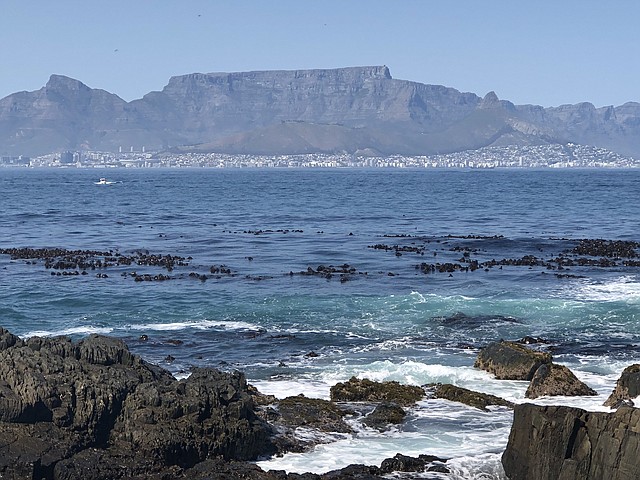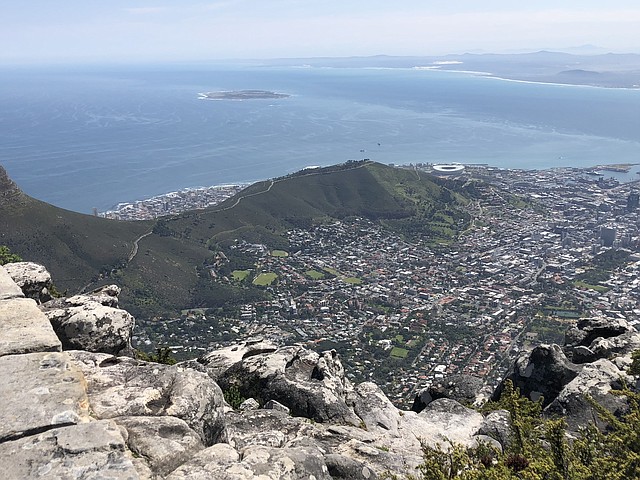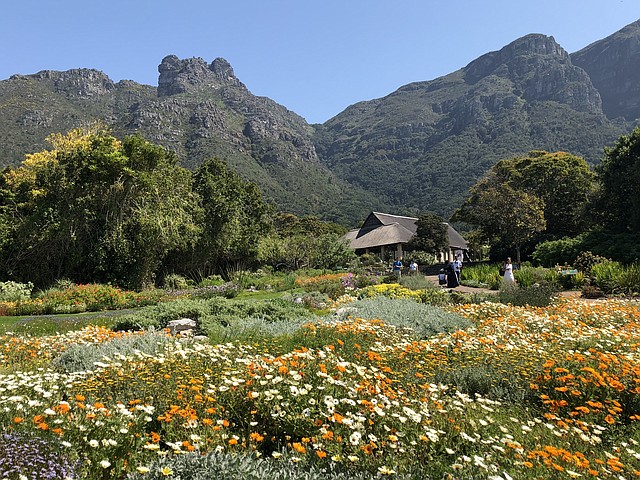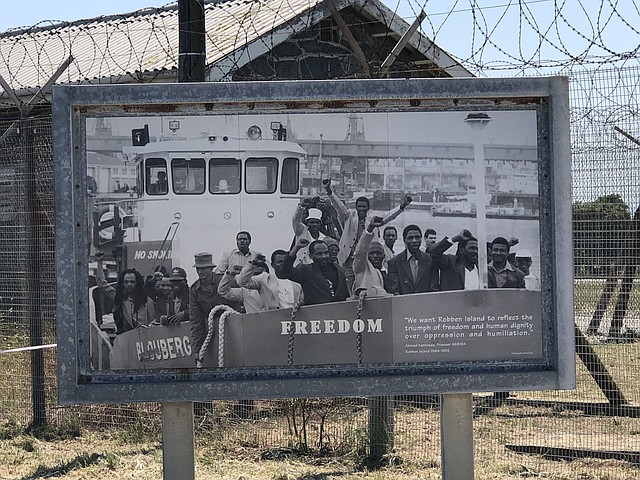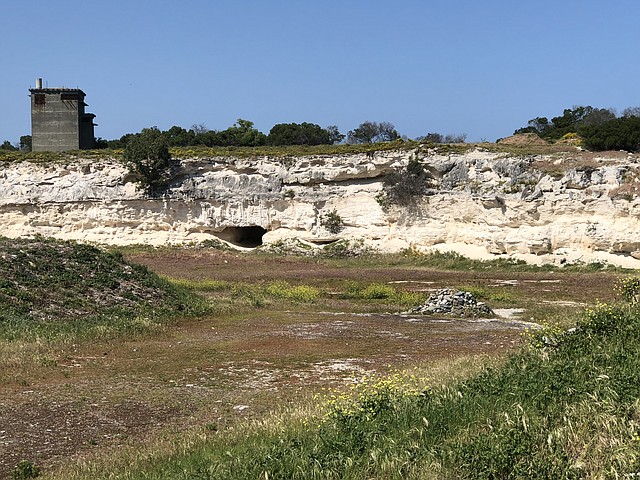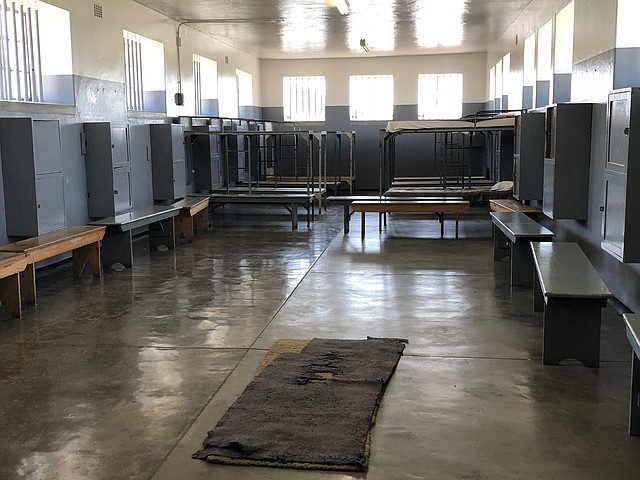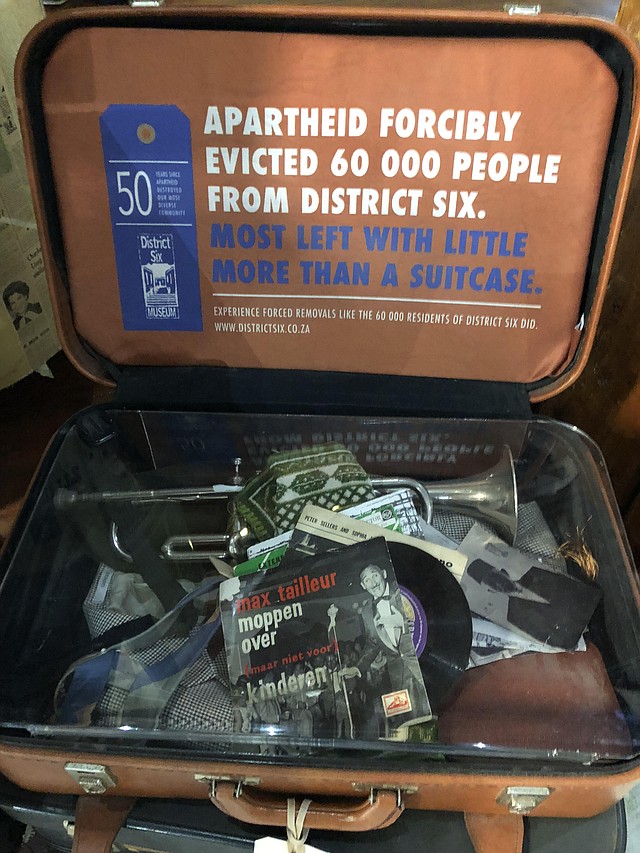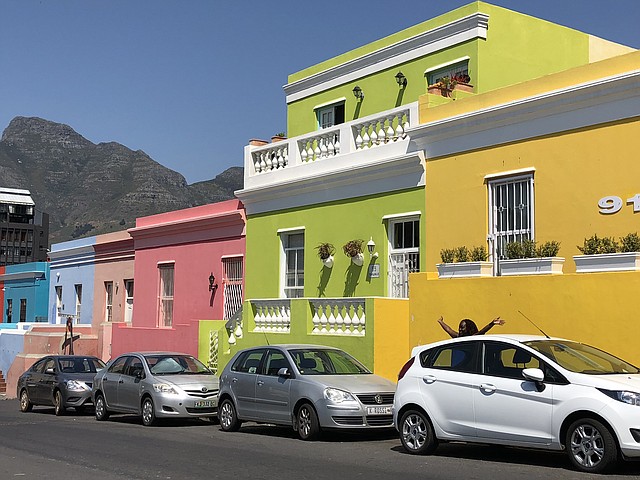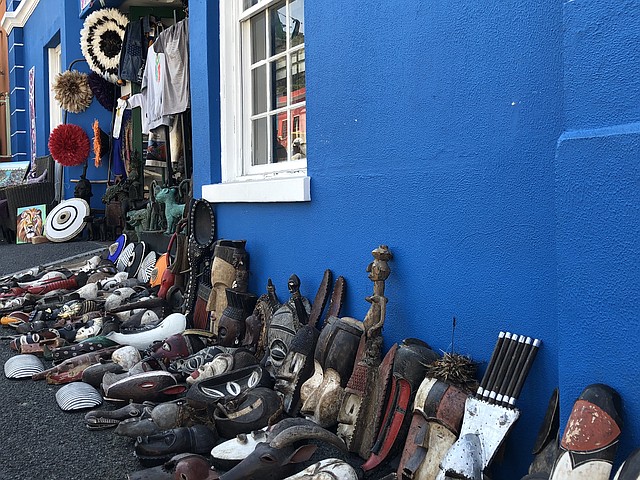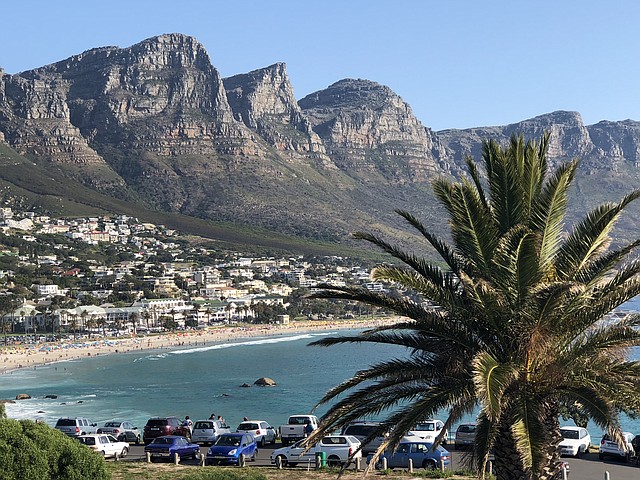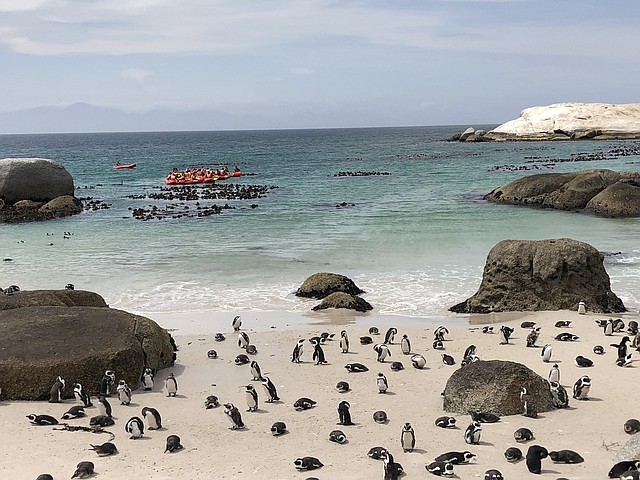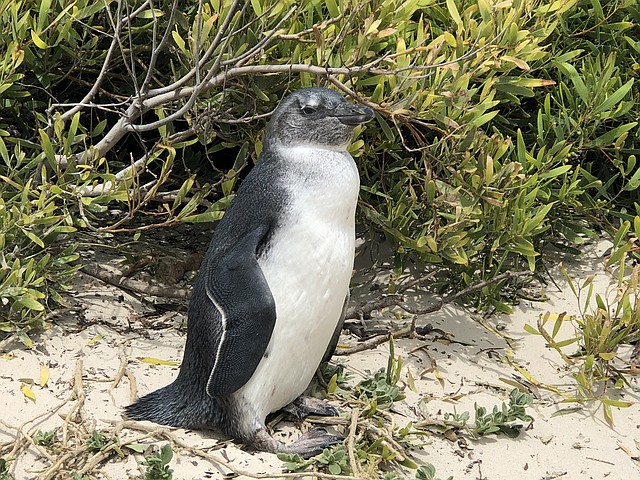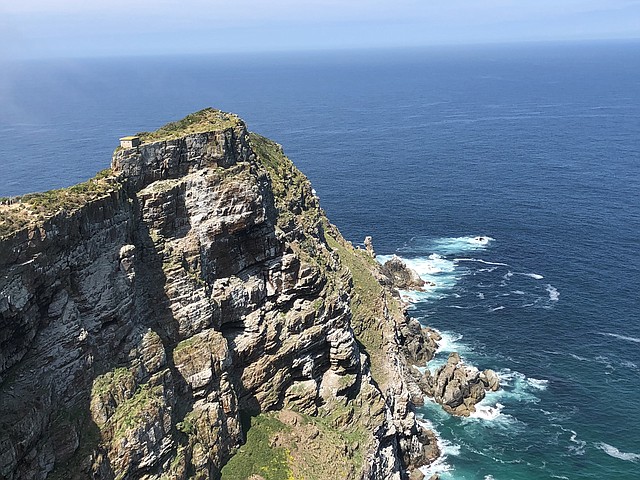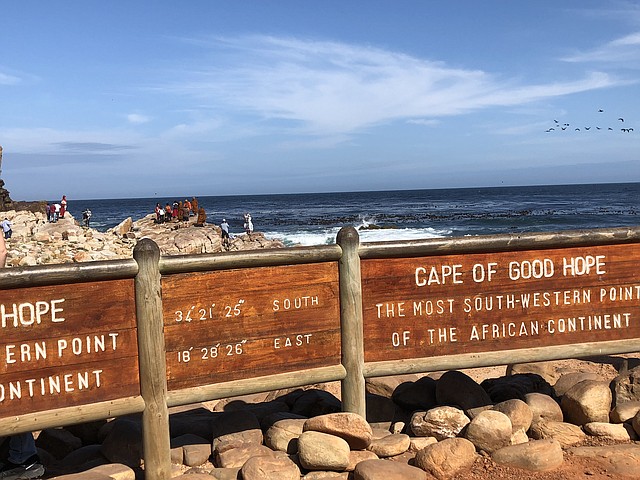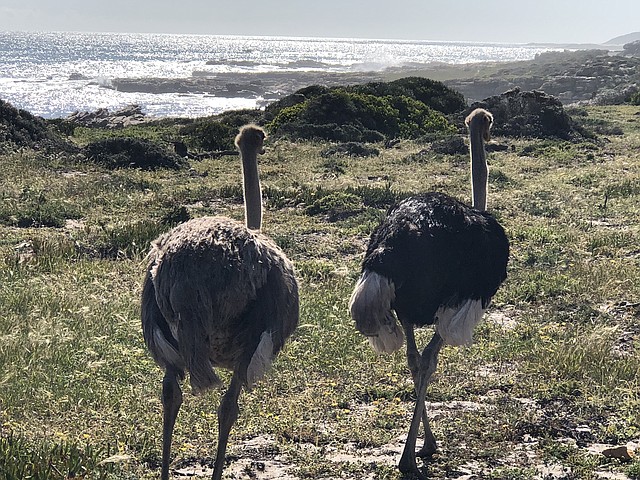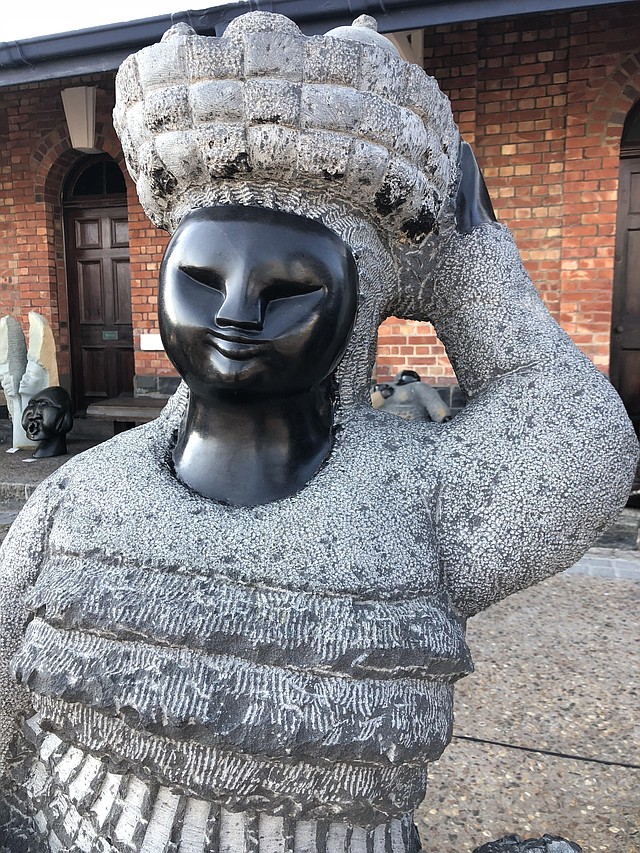Captivating Cape Town
December 6, 2018 at 6:00 a.m.
There’s nowhere quite like Cape Town, the jewel of South Africa. This fascinating city is a meld of cultures, history and landscape, crowned by the magnificent Table Mountain. Often regarded as synonymous with the “Mother City,” (Cape Town’s affectionate moniker), this landmark is the single most welcoming icon to its people, as well as to travelers from around the globe. Named a New Seven Wonders of Nature, the mountain is one of the oldest on earth, six times older than the Himalayas and five times older than the Rockies. It forms part of the Table Mountain National Park, which extends all the way to the Cape of Good Hope, the most southwestern extremity of Africa.
Table Mountain’s main feature is its level plateau, edged by impressive cliffs. Flanked by Devil’s Peak to the east and by Lion’s Head to the west, the plateau creates a natural amphitheater, offering a spectacular backdrop to Cape Town. Its relative flatness is due to the fact that it is a syncline mountain –the summit as we see it was actually once the bottom of a valley floor, likely worn away by the sea.
The mountain has been the subject of many stories, particularly with regards to its famous “tablecloth.” This meteorological phenomenon, which causes clouds to drift down the mountain slopes like billowing fabric, rendering the top invisible, is attributed to a number of myths. One popular legend tells of a Dutch pirate, Jan van Hunks, who supposedly challenged the devil to a smoking contest that persists to this day.
To experience the mountain’s panoramic 360-degree views, you can hike to the summit along one of its trails or if you don’t want to break a sweat, opt to ride the rotating Table Mountain Aerial Cableway. Once at the top, a series of pathways lead in different directions, offering unbridled vistas of the bustling city, the Atlantic seaboard and Camps Bay to the Cape Flats and Hottentots Holland Mountain Range. Along with the views, you’ll get the opportunity to take a closer look at the area’s rich biodiversity, which boasts several thousand species of plants, many that are endemic to the mountain.
The mountain is also an adventure playground with plenty of adrenaline-pumping activities available. Follow the lead of the locals, who take full advantage of this landscape by mountain biking, tandem-paragliding off Lion’s Head, rappelling off the summit, trail running and more.
For another Edenesque setting, check out Kirstenbosch Botanical Garden on the eastern foot of the mountain, located in the heart of the Cape Floral Region. The Kirstenbosch is the first botanical garden in the world to be included with a natural World Heritage Site. Spanning eighty-nine acres, the place is a veritable feast for the senses and a favorite of locals and visitors alike. This internationally acclaimed living museum celebrates the floral riches of southern Africa. Theme gardens focus on useful and water-wise plants, plants with scented flowers, aromatic leaves or unusual textures, succulents and bulbs, annuals, proteas, fynbos and ancient species that have survived almost unchanged since the time before dinosaurs roamed the earth. As you stroll the grounds, keep your eyes out for the exquisite African stone sculptures scattered throughout the kaleidoscope-colored landscape.
When you’re ready to trade serenity for some hustle and bustle, head to the Victoria & Alfred Waterfront. This lively spot, which offers breathtaking views of Table Mountain, buzzes with activity at all hours of the day. Situated in the oldest working harbor in the southern hemisphere – built in the late 19th century by Queen Victoria’s second son, Alfred – the place has acted as the stopover point for European ships for centuries. Today, the waterfront is a hive of shops (check out the Watershed, a warehouse with space for more than 150 vendors specializing in high quality African arts and crafts), restaurants (the V&A Food Market sells gourmet street food from all over the world), live music venues and notable attractions like the Two Oceans Aquarium, Nobel Square (named for the four bronze statues of South Africa’s Nobel Peace Prize laureates: Nelson Mandela, Albert Luthuli, Desmond Tutu and F.W. de Klerk), Zeitz Museum of Contemporary Art, Clock Tower Square, the Shimansky Cape Town Diamond Museum and Robinson Dry Dock. It’s also the jumping off point for whale-watching tours and excursions to Robben Island.
Robben Island, which is regarded as the symbol of “the triumph of the human spirit over adversity, suffering and injustice,” is an essential destination for visitors interested in immersing themselves in South Africa’s complex history. The small island was once home to a leper colony, mental institution, whaling station and military base, but perhaps it is best known for being the notorious penal colony used by the South African government to incarcerate political prisoners. Nobel Laureate and former President of South Africa, Nelson Mandela, was imprisoned on Robben Island for eighteen of the twenty-seven years he served behind bars, before the fall of apartheid. Two other former inmates, Kgalema Motlanthe and Jacob Zuma, also went on to become President of South Africa. At its peak, Robben Island held 1,000 prisoners. The last group of incarcerated men was released in 1991.
Today, Robben Island is a museum, as well as a UNESCO World Heritage Site, that serves to remind people of the price of freedom. To get there, you need to take a ferry from the Nelson Mandela Gateway at the waterfront. Once you disembark at Murray’s Bay Harbor, you’ll board a bus, which will transport you around the historical sites on the island. You’ll stop at the limestone quarry, where political prisoners were forced to endure back-breaking labor each day. The men, however, used this time to their advantage, engaging in critical debate and lessons of lifelong learning. Nearby is a pile of stones, which were put here spontaneously by former political prisoners at a reunion in 1995. The different colors represent the new South Africa.
You’ll also stop at Robert Sobukwe’s house. A forgotten hero of South Africa, Sobukwe was a black nationalist leader who founded the Pan Africanist Congress in opposition to the South African apartheid system. Sobukwe spent four years in isolation on Robben Island, eventually moving off the island and placed under house arrest.
Additional points on the tour include several army and navy bunkers, a lighthouse, the leper graveyard and the Maximum Security Prison. When you reach the latter, you’ll get off the bus and another guide will take you into the compound. The grim reality of the place sets in, as you learn about the harsh treatment the men had to withstand and see the inhuman conditions in which they were housed. Each guide is a former political prisoner who can speak as an authority, as someone who has lived on the island, not just studied it, and knows firsthand the repression it once perpetuated. The tour ends with a visit to Mandela’s cell.
More apartheid history is on view at the District Six Museum. Established in 1994, the museum commemorates and educates visitors about the people of District Six. This part of town was once home to one-tenth of the city’s population, but in 1966, when apartheid was in full swing, District Six was declared a “white” neighborhood, and more than 60,000 residents were forced to move to the shanty towns created in Cape Flats, a barren area on the outskirts of town. The museum is a memorial to these displaced citizens with exhibits that recount their stories and inform visitors about social justice.
History also takes center stage in Bo-Kaap. This little gem of a neighborhood, the oldest residential area in the city, is known for its photogenic, candy-colored houses and steep cobblestone streets. It is the cultural home of the Cape Muslim community. Residents are mostly descendants of slaves who were forcibly brought to the Cape by the Dutch imperialists during the 16th and 17th centuries. They came from Indonesia, Malaysia and elsewhere in Asia and Africa, and were known as “Cape Malays.”
This vibrant area is dotted with numerous Muslim saints’ shrines and beautiful mosques, including the noted Auwal Mosque, the first established Muslim mosque in South Africa. Take time to visit the tiny Bo-Kaap Museum, an important landmark. The building dates back to the 1760s and is the oldest house in the neighborhood that still remains its original form. Exhibits highlight the cultural contribution made by early Muslim settlers and recreate the life of a typical Malay family.
Tantalizing aromas from the shops and cafes fill the streets of Bo-Kaap. For one of the best butter chicken dishes or a flavorful North Indian curry, try Biesmiellah. Join the throngs that congregate at Rose Corner Café for warm “worsies” (sausages) and traditional “koeksisters” (a sticky, doughnut-like sweet). And shop for unique beaded creations at Monkeybiz, a nonprofit organization supporting disadvantaged South African women through self-employment, skills development and medical care. The organization has restored the art in beading, supplying the needed materials free-of-charge to women in the townships, allowing them to work from home and continue to care for their children.
When you’re ready for some fun in the sun, head to the beach. Cape Town’s beaches have been voted among the best in the world. The famous four beaches at Clifton are known for being the most sheltered from the wind in summer. They’re located on “millionaire’s mile,” in the most exclusive and expensive suburb in the city. The beaches are separated from one another by huge granite boulders and are beloved for their soft, white sand and calm, turquoise-hued water. A hop, skip and a jump away is Camps Bay, probably the top, all-round beach, if you don’t count swimming. Only the hardy attempt it here, as the water temps hover in the 50s most of the year. Work on your tan, play beach volleyball or toss a Frisbee around, while soaking in the incredible views of the Twelve Apostles, an impressive stretch of mountains. In reality, there are actually seventeen or eighteen buttresses, depending how you count them (not that anyone is counting, given the scenery!). Quench your thirst and dine on fresh seafood at one of the many trendy bars and restaurants that line the palm-fringed street. You might spot a celeb or two in the mix, as this is the spot to see and be seen.
Further south of Cape Town is renowned Boulders Beach. This dramatic stretch on False Bay earned its name from the massive boulders that lie scattered across the sands and separate the shoreline into private coves. They serve to shelter the cove from currents and large waves. Though this is a popular spot for swimming due to warmer, gentler waters, the real attraction is the locals, a colony of African Penguins. These tuxedoed residents teeter all over the place, wandering freely in the protected natural environment. From just two breeding pairs in 1982, the population has grown to several thousand birds in recent years.
To view the penguins and their nesting and breeding sites, use the designated walkway a short stroll from the actual Boulders Beach. Take care not to get too close, as although they might look cute and cuddly, these birds’ beaks are razor sharp and they have no reservations about nipping your finger or nose. And beware their pungent odor!
Continue south, where the road eventually leads you to the Cape of Good Hope and to Cape Point, the terminus of the Cape Peninsula. The route’s breathtaking scenery is mesmerizing, but the reward when you reach your destination is even greater – picture-perfect bays, beaches, rolling green hills and valleys and stretches of endemic fynbos (“fine bush”). Wander the trails that meander through this Natural World Heritage Site and head up to the Cape Point Lighthouse, reached by foot or via a quick ride on the Flying Dutchman funicular. Built in 1859, the lighthouse is an important navigational landmark and the most powerful of its kind on the South African coast. For centuries, it has been a beacon of hope, guiding ships through the perilous waters known by mariners as the “Cape of Storms.” You’ll probably be able to spot a few of the two dozen plus shipwrecks in the area, and if you’re lucky, some whales.
If you’re wondering where the Cape Point sign is, just look for the masses of people bottlenecked in one place. They’re all jockeying for position, as a picture here is proof positive that you’ve reached the most southwesterly tip of Africa.
There are plenty of other scenic drives for a day’s outing from Cape Town. Popular with many visitors are Winelands destinations, such as Constantia and Stellenbosch. You’ll enjoy charming towns, quaint villages and bucolic estates, and of course, taste some excellent wine in the process!
It’s easy to get around the city, as taxis and Ubers are in abundance. There’s also the City Sightseeing hop-on, hop-off bus that stops at well-known landmarks, while giving you an informative narration about all things Cape Town. If you’re interested in guided tours, there are countless options with companies that entice you to experience the city in various ways, by foot, from the seat of a bicycle, on a boat, etc., each providing a different perspective of the area.
Finding accommodations in Cape Town is also easy. As one of the top tourist destinations in the world, the city offers lodging to suit all tastes and budgets, from five-star luxury rooms with a view to wallet-friendly backpacker hostels and everything in between. There’s even a number of camping sites within the Cape metropolitan vicinity. More unusual options include an airstream trailer on a downtown hotel rooftop, a cottage situated on Table Mountain and a B&B in the township.
When your stomach starts rumbling at the bottom of Africa, you’ll be happy to know that the city’s culinary scene is very eclectic and international. It’s a melting pot with Dutch, American, Spanish, Indian and African influences. Seafood and game reign supreme. Feast on giant prawns, calamari, kingklip, line fish and cape salmon, or the proverbial hake and chips. Carnivores will want to try springbok, kudu and ostrich meat, grilled or in biltong form (dried, salted and spiced). Braais, or barbecues, are very popular and typically include some type of protein, traditional pap (maize based porridge), and the ubiquitous chakalaka, a South African vegetable relish, usually spicy. Wash it down with a local beer, like a Devil’s Peak Lager or Striped Horse Pale Ale. And instead of coffee, try the rooibos tea, a national treasure. Grown in the Cederberg region, it’s packed with healthy antioxidants.
If you go:
http://www.capetown.travel/
Debbie Stone is an established travel writer and columnist, who crosses the globe in search of unique destinations and experiences to share with her readers and listeners. She’s an avid explorer who welcomes new opportunities to increase awareness and enthusiasm for places, culture, food, history, nature, outdoor adventure, wellness and more. Her travels have taken her to nearly 100 countries and to all seven continents, and her stories appear in numerous print and digital publications.
